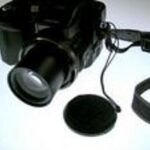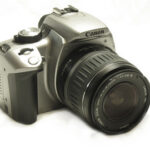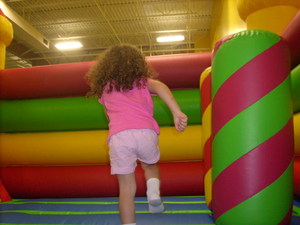With the popularity of digital cameras it seems everyone is now a photographer. Taking pictures is easy. Taking good ones however requires some learning and practice. One of the biggest challenges people encounter when taking pictures is discerning the different techniques of indoor versus outdoor photography. Below, I’ve outlined some tips that if followed, should help you to make beautiful outdoor photographs with your digital camera.
Note the Weather. All things being equal, you’ll usually find you get better results taking pictures outdoors when the sky is covered with clouds. This is because the clouds will smooth out the light and make it less jarring. Most objects in direct sunlight come out as harsh or glaring. Partly cloudy days are challenging because of the constantly shifting light. If you have a choice, choose an overcast day, it will make your pictures all turn out better.
You can also use other aspects of weather to enhance your pictures. Rain for example can be somber if it is pouring out, or joyful if you have a child for a subject jumping about in a puddle. You can also wait for the rain to stop and make good use of the soggy aftermath.
Depending on what you plan to capture, you can also make very good use of the time of day. Early morning when the sun is low, or late evening, at around sunset are optimal times for taking pictures outdoors because the light is diffused and makes everything look soft and romantic.
Wind can also play a role in your picture taking. It can add excitement, for example if your subject is a person with long blowing hair, or to water as its whipped about at the seashore. On the other hand, a calm day offers the chance for a pond or lake with no ripples, which is always good for taking pictures with colorful reflections.
Check the Environment. Generally speaking if you want to take pictures of people outdoors, its best to use simple backgrounds. This will cause the focus to be on your subjects rather than what is around them. On the other hand, if what you want to capture is your subject in a certain environment, it is sometimes best to frame them to one side or the other. This gives a more definite feeling of depth and place.
If you are forced to take pictures on a sunny day, try to make sure your subjects are either in the shade or are at an angle from the sun. This not only reduces squinting, but also helps to keep faces from looking washed out.
Camera Techniques. When outdoors you might think you don’t need to use the flash. Quite often, the opposite is true. Use your flash when there are shadows overwhelming your subject, such as if you are aiming at a person who is standing in the shade. The flash will help to fill out their features. Be certain you are in flash range though, which for most digital cameras is about five steps away.
Another thing you might think about is taking candid shots, rather than insisting on poses. Quite often pictures of people are best when the subjects are at ease or are engaged in something other than forcing a smile for the camera.
General Tips. One of the best things you can do to improve outdoor photography, is to take a bunch of pictures of the same thing. A lot of times people tend to take just one or two pictures of something. Forget that, this is the digital age. If you think something is interesting enough to take a picture of it, why not take ten or twenty? Be sure to change things around between shots though. Move yourself around to get different views and to change the angle of the sun. Change the automatic settings on your camera. Ask the subject to change. Change whatever is changeable and then pick out the best later and delete the ones you don’t like.
Something you will always want to keep in mind when taking outdoor pictures is whether you will be taking pictures of people or objects, such as flowers or buildings, or something bigger and more generic, such as landscapes. You’ll want to approach these different types of photography in different ways. In general, objects are the easiest things to photograph because they don’t move around and because they have a consistent look. You can also choose when to shoot them, which is in essence a form of controlling the weather. People on the other hand can walk around or smile or frown or run away. They can also be on a schedule and thus not available when you are ready to take some pictures. Landscapes are similar to objects in that they remain rather static, but generally they require more experience to capture esthetically pleasing images due to the nature of artistic preferences. Also, digital cameras are generally better at capturing things in sharper detail when they are closer.
Another option you might consider when taking pictures outdoors is whether to shoot in color or black and white. For most purposes, you’ll no doubt find color to be your first choice. Sometimes though, setting your camera to black and white can allow you to capture mood or detail that is impossible with color. In general, black and white photographs are very good options when trying to capture something stark, such as clearly defined shadows. It’s also good for setting a nostalgic, old time, sort of mood.
Conclusion: The purpose of this article has been to give you some ideas on how you might improve your outdoor photography results. The best thing to keep in mind when shooting outdoors is to take a lot of pictures, view them on your LCD to see the results and then shoot some more. Try to change things around. After awhile you’ll start to get a feel for what works better and what doesn’t. Good luck, and get that camera outside and take some pictures already.





